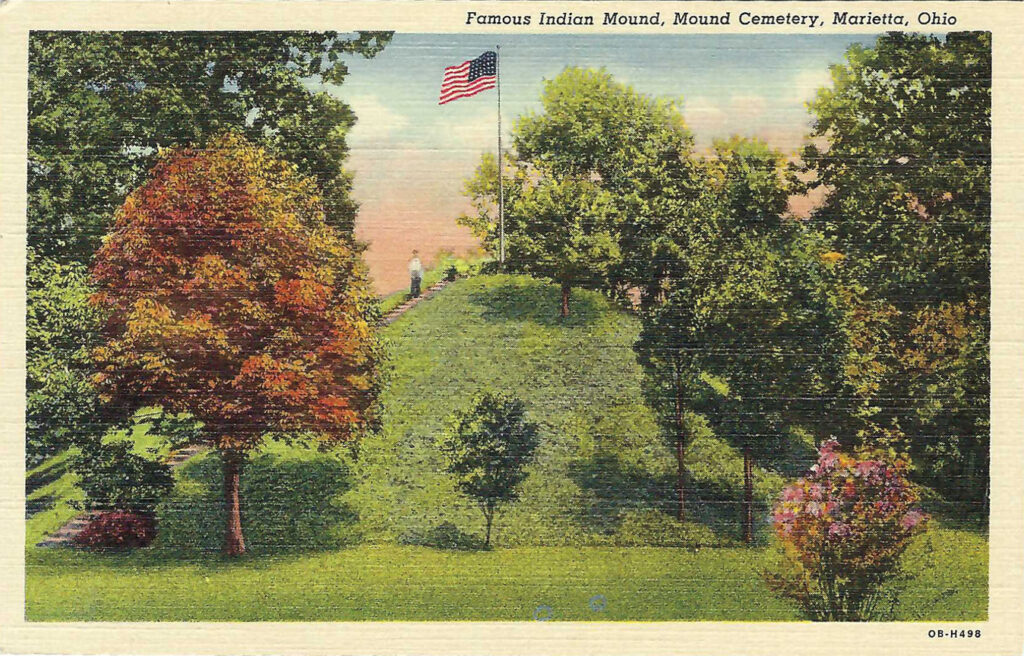
Michael Bushnell
Publisher
The description on the back of this linen-style postcard published by the Curt Teich Company of Chicago, Ill. reads: “The Great Mound is as perfect today as it was when discovered by General Rufus Putnam’s little band. Its perpendicular altitude is 30 feet, and at its base is a regular circle, 375 feet in circumference. It is surrounded by a moat 15 feet wide and 4+ feet deep and defended by a parapet 20 feet thick and 585 feet in circumference.”
The surrounding cemetery, named Mound Cemetery in Marietta, Oh. is a historic cemetery developed around the base of a prehistoric Adena burial mound known as the Great Mound. Marietta’s founders preserved the Great Mound from destruction by establishing the city cemetery around it in 1801.
Soon after the close of the American Revolution, emigrants from Massachusetts established the town of Marietta in 1788. A number of Marietta’s founders were former officers in the Continental Army who saw action during the war. Land grants were given to army officers in return for military services. Notables buried there are Rufus Putnam; Col. Robert Taylor, the cemetery’s first burial; Griffin Greene, Sr., Army Quartermaster; and Commodore Abraham Whipple.
Putnam’s engineering experience would serve the town company well during the early years of Marietta, pulling from his military experience, engineering earthworks that helped fortify the Continental Army in such campaigns as Long Island, Stony Point and West Point. Putnam would go on to serve under General Anthony “Mad Anthony” Wayne in the Corps of Light Infantry after the capture of Stony Point. He was commissioned as a Brigadier General in 1783.
The Great Mound is part of an Ohio Hopewell culture mound complex known as the Marietta Earthworks, estimated to be built between 100 BC and 500 AD. The mound complex includes three walled enclosures and at least two other additional platform-type mounds and the Great Mound with its moat and earthworks.
The Conus mound was listed as a National Historic Landmark on February 23, 1973, as the Mound Cemetery Mound site. In 1990 archaeologists from the Cleveland Natural History Museum excavated a section of the Capitol Mound and determined that the mound was definitely constructed by people of the Hopewell culture.


















